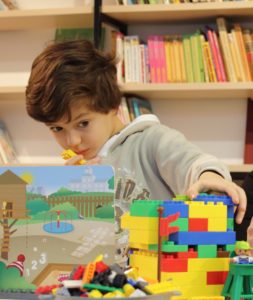Barrier Games – What they are and how can they be used to promote language development?
What are barrier games?
Barrier games are any game or activity where two people sit across from each other with the same objects or scenes with a barrier in between them so that neither person can see the other person’s scene.
An example of a barrier game can be using magnetic boards. Both individuals are split by an board and given identical scenes and magnets. Both players then take turns providing each other with instructions as to where to put the magnets. For example, “Put the red fish in the middle of the river.”
Barrier games can be used to promote the following language skills:
- Following directions (e.g. Put the red fish in the tree),
- Expressive language. This can include speaking in sentences and providing clear instructions to the other player (e.g. I want you to find the yellow snake and put it in the tent),
- Turn taking,
- Prepositions (e.g. Put the dragon under the tent),
- Asking clarifying questions (e.g. Do you want the bird in the big tree or little tree),
- Adjectives and concepts (e.g. big/little, red/blue, tall/short), and
- Vocabulary development.
What are some barrier games I can play at home with my child?

- Blocks – This can be done by giving each player 5-10 blocks each and then take in turns providing instructions. Ensure there is a barrier between the two players.
- Lego – This can be done with Duplo blocks or regular Lego blocks. One way this can be done is using the instructions. One person can hold the instruction manual and hide it from the other player. They can then use the instructions to provide the other with instructions as where to put the blocks. For example, ‘put the red block with 6 dots on top of the blue block.’ This promotes listening to instructions, providing clear instructions and asking clarifying questions.
- Drawing – Using paper and textas is another easy way to create a barrier game. Similar to blocks and Lego, you will need a barrier between the two players. The game can be created by each having a piece of paper and one person providing the other with an instruction. For example, ‘in the middle of the page, draw a big circle’. ‘Colour in the circle blue.’ At the end you can see if both of your pictures are the same.
If you are concerned about your child’s language skills, or would like to know more about language development, you can get in contact with one of our Speech Pathologists or our client care team via email on [email protected], phone (07) 3265 4495, or via our website.

Georgia West
Speech Pathologist
